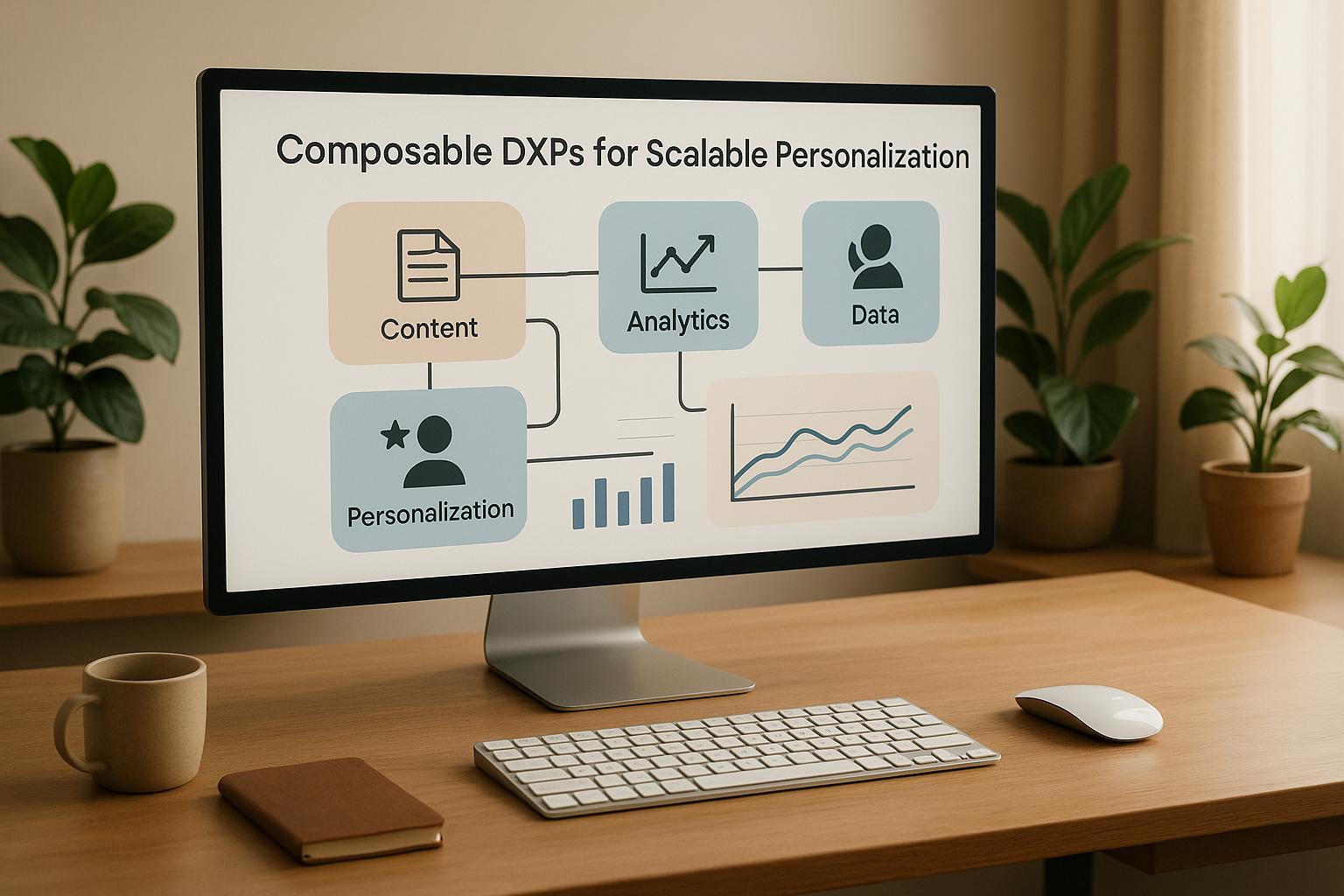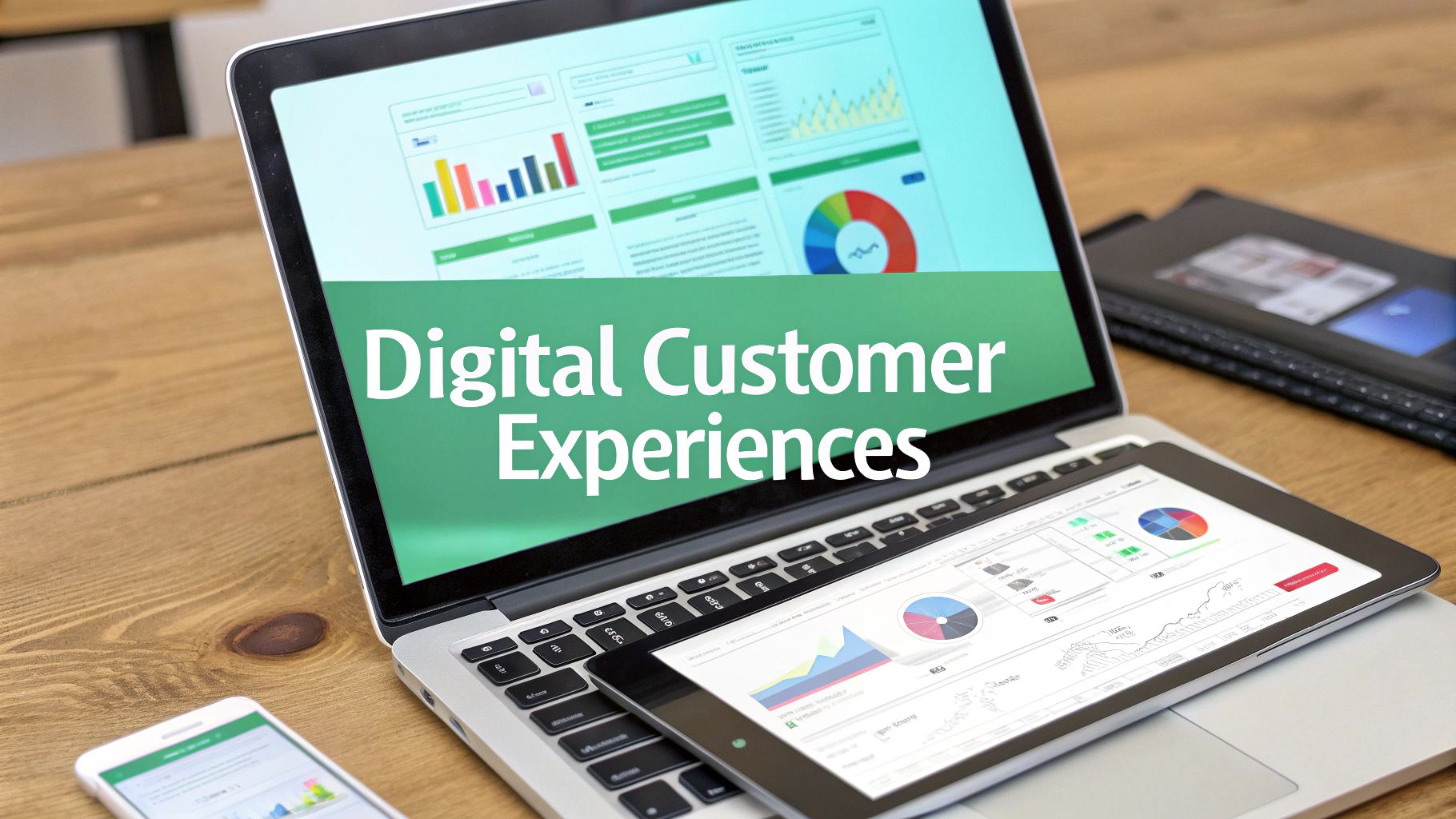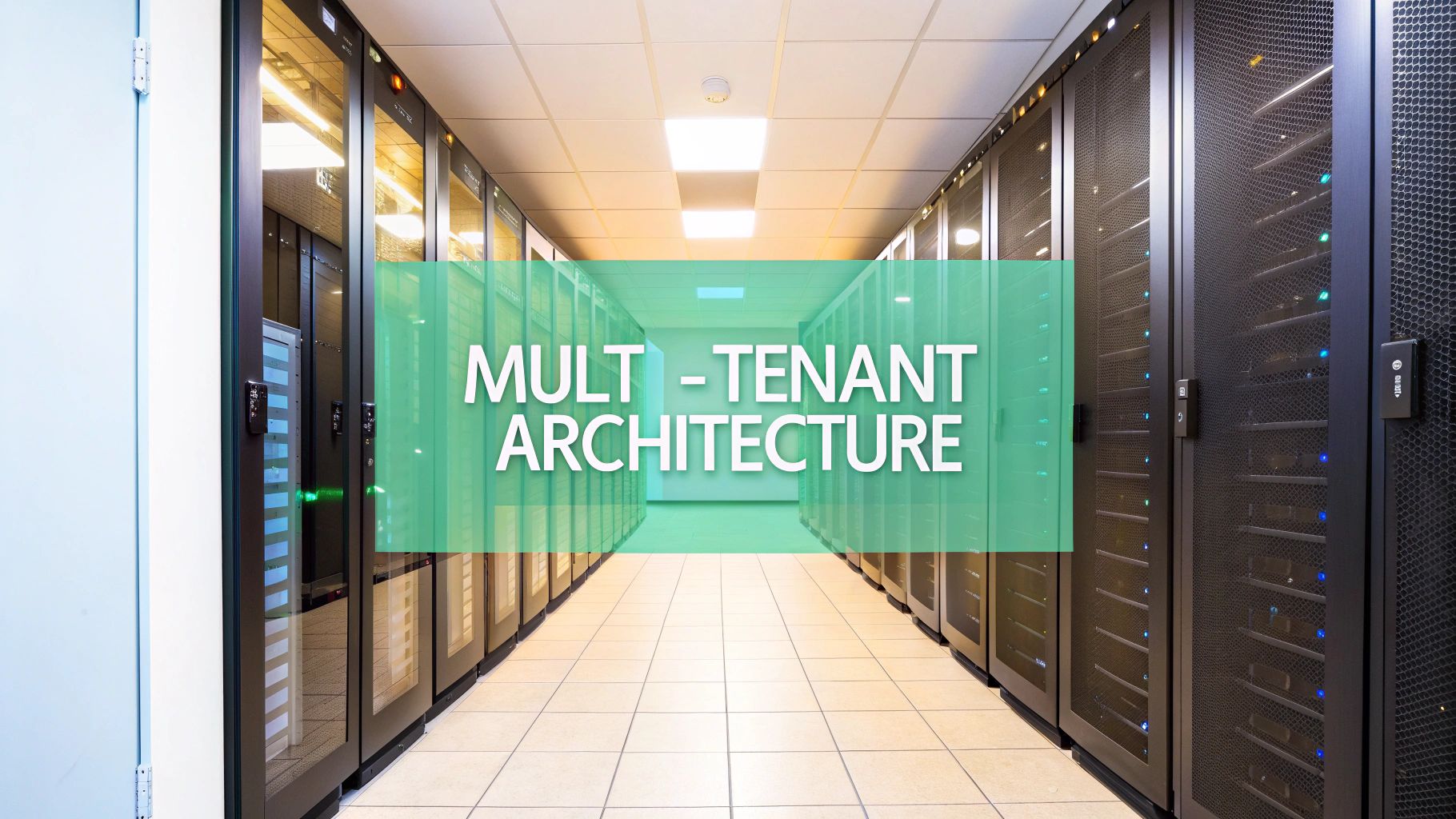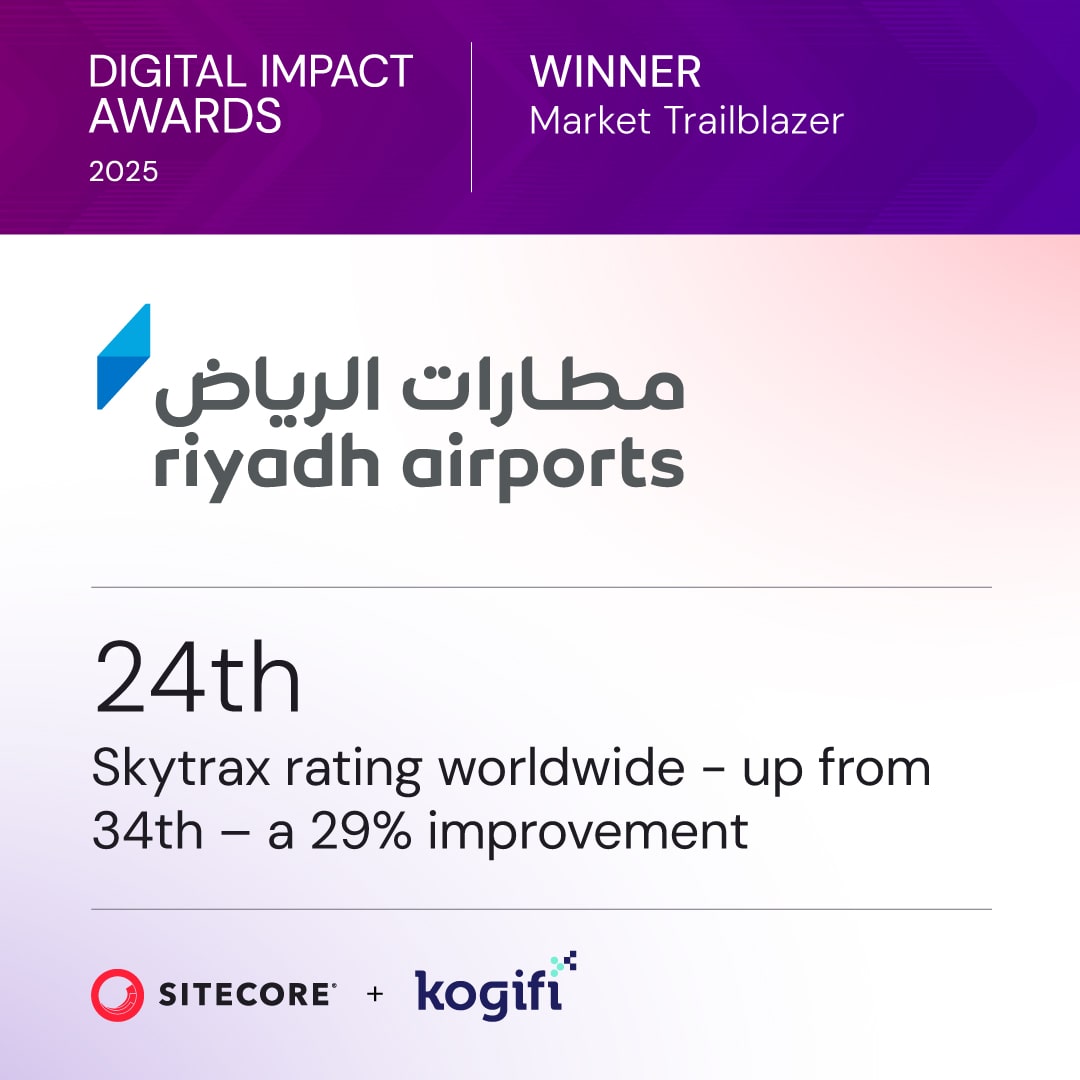Composable DXPs (Digital Experience Platforms) are reshaping how companies deliver tailored, scalable customer experiences. Unlike rigid monolithic systems, these modular platforms let businesses integrate only the tools they need, improving efficiency and cutting costs. Here are the key takeaways:
- Customer Expectations: 80% of B2B buyers demand real-time responses, and 76% want role-specific content.
- Adoption Trends: By 2026, 70% of enterprises are expected to adopt composable DXPs.
- Benefits: Faster scalability, better personalization, and reduced vendor lock-in.
- Challenges: Integration complexity and upfront costs, but long-term savings often outweigh these.
Composable DXPs offer flexibility and efficiency, making them ideal for businesses aiming to meet modern customer demands while staying agile in a competitive market.
Episode 5: Composable DXPs are the future of Personalization
1. Composable DXPs
Composable DXPs move away from the traditional, one-size-fits-all platforms by adopting a modular, API-driven framework. This approach allows businesses to pick and choose the best tools for specific functions, seamlessly integrating them into a unified system that meets their exact needs.
At the heart of composable DXPs lies flexibility. Instead of being tied to a single vendor's ecosystem, businesses can mix and match solutions tailored to their unique requirements. As Forrester's Joe Cicman aptly puts it:
"How is it possible for one vendor to create one product that works across multiple industries and grows in scope as a company's digital remit grows?"
This modular approach not only provides adaptability but also paves the way for effortless scalability.
Scalability
One of the standout advantages of composable DXPs is their ability to scale efficiently. Unlike monolithic platforms that require scaling the entire system to meet growing demand, composable DXPs allow individual services to scale independently. Thanks to their cloud-native design, these systems automatically adjust to usage spikes in real time, eliminating the need for manual intervention.
For example, when website traffic surges or data processing needs increase, the system adapts instantly. Traditional DXPs, on the other hand, often require developers to step in, purchase additional hardware, or upgrade licenses to handle increased demand - a far more time-consuming and costly process.
Personalization Capabilities
Composable DXPs shine when it comes to personalization. By gathering data from every customer interaction, these platforms enable advanced segmentation that goes far beyond basic demographics. They can dynamically adjust content in real time, catering to individual preferences, interactions, and contextual factors.
The impact of personalization is hard to overstate. Companies that excel in this area and leverage analytics see a 40% increase in revenue. In financial services, for instance, 72% of customers engage only with personalized messaging.
Real-world examples highlight how this works. Imagine a retail clothing brand using composable DXPs to combine customer preferences, browsing habits, and purchase histories into a single interface. This allows them to deliver highly targeted experiences, such as showcasing special offers on a new sportswear collection to customers who frequently buy activewear. Similarly, banks can use these systems to offer tailored promotions within their mobile apps, like presenting a college student with a checking account deal while suggesting a credit card to a young professional .
Composable DXPs also integrate seamlessly with CRM and marketing automation tools, centralizing customer data and automating personalized campaigns. When paired with AI, these platforms become even more powerful, enabling predictive analytics and automated content recommendations. This helps businesses anticipate customer needs rather than just reacting to them.
Integration Complexity
While composable DXPs excel in personalization and flexibility, their modular design introduces some integration challenges. Connecting multiple independent tools and services can make it tricky to maintain a consistent user experience, especially when backend systems vary.
There are additional hurdles, too. Development and maintenance costs can rise due to the complexity of integrating various services. Network latency between different components and potential failures in individual applications can also impact overall system performance.
Governance becomes another critical factor. Managing multiple applications requires a well-thought-out governance structure, which includes a dedicated team of stakeholders and product owners. However, with robust APIs, pre-built connectors, and regular monitoring, these challenges can be mitigated. Enterprises should focus on ensuring smooth integration with existing systems and optimizing their composable stack to identify and resolve performance issues early.
Cost Efficiency
Tackling integration complexities upfront often leads to long-term cost efficiency. Composable DXPs save money by allowing businesses to choose only the tools they need, avoiding unnecessary licensing fees. Although the initial setup may require a significant investment, the ability to select best-in-class components ensures businesses aren’t paying for features they don’t use.
Another major cost-saving factor is reduced vendor lock-in. Individual components can be swapped out as needs evolve, avoiding expensive, large-scale migrations. Additionally, the cloud-native architecture eliminates many traditional infrastructure costs. Automatic scaling removes the need to over-provision hardware for peak loads, while the pay-as-you-go model ensures expenses are directly tied to the value delivered.
2. Monolithic DXPs
Monolithic DXPs package all their features into a single, tightly integrated system. While this simplifies deployment, it often comes at the cost of scalability and personalization.
Scalability
Monolithic DXPs face challenges when it comes to scaling. Their tightly coupled architecture makes it impossible to scale individual components independently. Instead, businesses are forced to scale the entire system, which can mean upgrading hardware, purchasing more expensive licensing tiers, and relying on developers to make it happen. This rigidity also slows down the ability to roll out new features or quickly adapt to changing needs since updates often require rebuilding the entire system. According to Gartner, by 2026, 70% of organizations will need to transition to a composable architecture to address these limitations.
Personalization Capabilities
Delivering personalized experiences is another area where monolithic DXPs fall short. Their rigid data flows and limited platform capabilities make it difficult to create the tailored interactions that modern customers expect. For example, the inability to go beyond the vendor’s built-in features can stifle creativity and prevent developers from implementing advanced personalization strategies. With 75% of consumers expecting consistent interactions across departments, these platforms often fail to collect and analyze the data needed for a seamless customer experience. By 2023, companies using monolithic DXPs reportedly lagged behind competitors with composable architectures by as much as 80% in rolling out new features.
Integration Complexity
Connecting monolithic DXPs to external systems can be a headache. Their design often makes it difficult to adopt new technologies or integrate third-party tools, leading to increased time, cost, and resource requirements for even small changes. Customizing these platforms to meet specific business needs frequently requires extensive development work, further complicating the process.
Cost Efficiency
At first glance, the bundled pricing of monolithic DXPs might seem cost-effective. However, the reality is often different. Businesses end up paying for features they don’t use, spending heavily on customizations, and facing significant expenses when scaling the system. This inflexibility can lock companies into a vendor’s roadmap and pricing structure, while delays in innovation create hidden costs that hurt competitiveness and revenue potential. These challenges set the stage for a more detailed discussion on the pros and cons in the next section.
sbb-itb-91124b2
Pros and Cons
When weighing the trade-offs between composable and monolithic DXPs, the differences become clear, especially when it comes to cost and flexibility. One of the biggest distinctions is how each approach impacts cost efficiency over time. Monolithic DXPs might seem less expensive at first glance, but composable architectures often offer better value in the long run. In fact, businesses have reported up to a 295% ROI within three years of switching to a composable DXP solution.
That said, composable DXPs come with higher upfront costs. The complexity of integrating multiple systems means organizations need to invest time and resources into connecting various components. Here’s a quick breakdown of how the two approaches stack up:
| Aspect | Composable DXP | Monolithic DXP |
|---|---|---|
| Cost Efficiency | Lower total ownership costs over time; you only pay for the components you need | Higher overall cost due to vendor lock-in and paying for unused features |
| License Cost | Costs depend on the specific components and integrations required | Bundled features often include tools you may never use |
Monolithic DXPs also come with the downside of vendor lock-in, which can make it both expensive and challenging to switch platforms or adopt new technologies. On the other hand, composable architectures avoid this issue by being modular. This flexibility not only supports scalability but also makes it easier to deliver tailored shopping experiences.
Conclusion
The analysis makes one thing clear: composable DXPs are shaping the future of scalable personalization for U.S. enterprises. While monolithic systems might appear straightforward at first, they often fall short when it comes to keeping up with today’s dynamic digital environment.
The numbers speak for themselves. With 70% of businesses already transitioning to composable DXPs and Gartner forecasting 70% enterprise adoption of composable DXP technologies by 2026, the trend is undeniable. Companies embracing composable architectures are seeing tangible benefits - they can roll out new features 4 to 10 times faster and achieve up to 295% ROI within three years. Real-world examples further highlight this shift. For instance, Mars boosted conversion rates by 15% and increased average order value by 4.5% after implementing a composable platform for the M&Ms brand across 15 countries. Similarly, Michelin launched its Better Motion loyalty program in just five months thanks to a composable approach.
Gartner’s research reinforces the advantages of composable DXPs. Unlike monolithic systems, composable platforms empower U.S. enterprises to deliver scalable, personalized shopping experiences. Their modular design eliminates vendor lock-in, accelerates innovation, and ensures businesses only pay for what they actually use. Plus, they enable companies to adapt quickly to ever-changing customer expectations.
For organizations looking to thrive in this era of personalization, the shift to composable architecture is no longer optional - it’s essential. With Kogifi’s expertise in implementing composable solutions, enterprises can confidently create scalable, tailored digital experiences that meet the demands of today’s market.
FAQs
What are the main advantages of using a composable DXP instead of a monolithic DXP for businesses aiming to enhance scalability and personalization?
A composable DXP gives businesses the freedom to tailor their digital experience platform to meet specific needs, offering more flexibility and room to grow than a traditional, all-in-one system. Its modular structure lets companies choose and integrate the tools and features that work best for them - without needing to replace the entire system. This adaptability makes it easier to keep pace with shifting customer expectations and business expansion.
By taking a composable approach, businesses can craft deeply personalized experiences more effectively. Tools like AI-powered personalization and omnichannel strategies make this process smoother and more impactful. Plus, updates and new features can be rolled out much quicker, cutting down on delays and allowing enterprises to scale effortlessly as demands evolve.
How do composable DXPs simplify integrations, and what steps can businesses take to deliver a smooth user experience?
Composable DXPs make integrating digital tools much easier by using modular, API-first architectures. This design allows businesses to effortlessly connect and manage tools like customer data platforms, analytics systems, and personalization engines. The result? Companies can embrace new technologies and channels without needing to completely overhaul their existing systems.
For a smooth user experience, businesses should focus on a few key strategies: centralized management of digital tools to streamline operations, standardized APIs to ensure consistent communication between systems, and scalability to keep up with growing customer demands. These approaches not only cut down on complexity but also boost flexibility and personalization, delivering a more tailored experience for every user.
What are the long-term cost benefits of switching to a composable DXP, and how can businesses manage the upfront investment effectively?
Switching to a composable DXP can save money over time by cutting down on vendor lock-in, improving scalability, and making it easier for businesses to adjust to changing needs. This adaptability often translates into lower costs for maintenance and upgrades down the road.
That said, the upfront costs can be higher because of the complexity involved in selecting and integrating various components. To keep these expenses under control, businesses can take a phased approach to implementation, focusing on the most critical features first. Using automation tools can also help simplify processes and reduce labor costs. With careful planning and well-defined goals, businesses can speed up their return on investment, making the transition both smoother and more cost-effective over time.








































